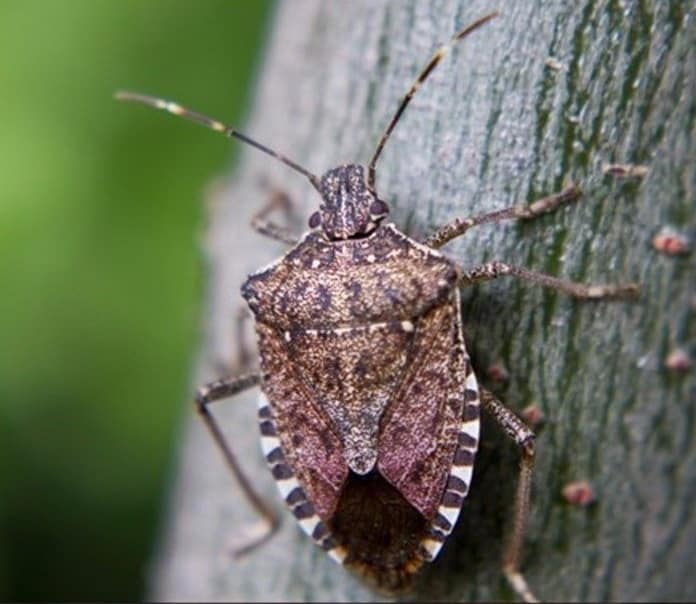
Our approach with Stinkbug Control is identical to every pest that we handle.
We perform a thorough inspection
Determine what is the target pest.
Devise a strategy.
Our Stinkbug Control Measures
The key to stinkbug control is preventing their entry in the fall. Once they have entered the home, there aren’t a lot of treatment options. The easiest way to remove them once they are indoors is with a vacuum cleaner; however, good luck getting the smell out of your vacuum.
As with all our pest control programs, we implement standard Integrated Pest Management measures which include mechanical exclusions. This means we will recommend caulking any cracks around windows, doors, siding, utility pipes, behind chimneys, and underneath the wood fascia and other openings deemed a possible entry point. We can provide you with a quote for us to perform these services. Another measure in prevention is to maintain or replace any damaged screens on doors and windows.
We time our quarterly or Bi-Monthly Pest Control services to apply pesticides outside your home for an additional layer of protection. Timing of the pesticide application is important. As the nighttime temperatures dip into the low 50’s or lower you can expect the stinkbugs to arrive.
So, keep in mind that while stinkbugs are a nuisance they can be dealt with. It’s not easy or fun to do but avoiding the stinky smell they bring is worth the effort.
As with most prolific species, the Brown Marmorated Stinkbug (BMSB) has become firmly entrenched here after being accidentally introduced from Asia in the 1900’s. Stinkbugs are fond of the warmer south and west sides of a house. Massive amounts of stinkbugs will congregate, and they will inevitably work their way into the building through small cracks or crevices, door jams, attic vents, and other gaps in the structure. They are seeking a suitable place to stay warm for the winter. Once inside the building, they go dormant until spring. The problem is that every time there is a warm sunny winter day their hiding spot warms up and they think it is spring. In their effort to get back outside they accidentally end up inside the home. They don’t want to be inside any more than you want them inside. They are merely looking for a way to get back out.
Stinkbugs do not reproduce inside, therefore they invade homes from the outside. They go through a simple metamorphosis: egg, nymph, and adult.
Due to milder temperatures, the South has the highest populations. There is hope – we can help!
